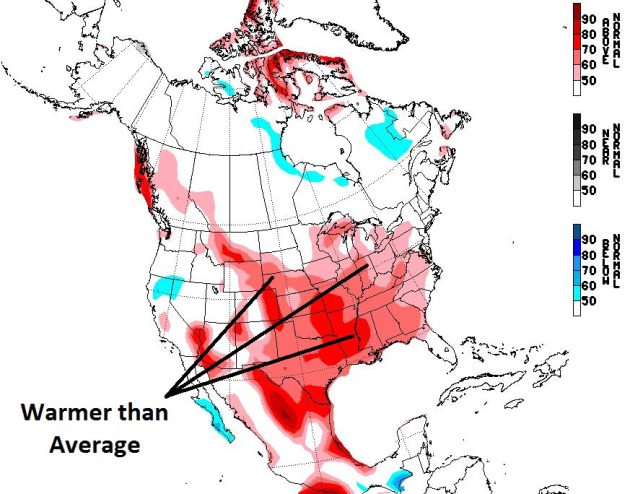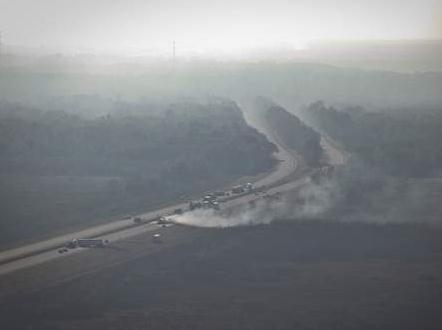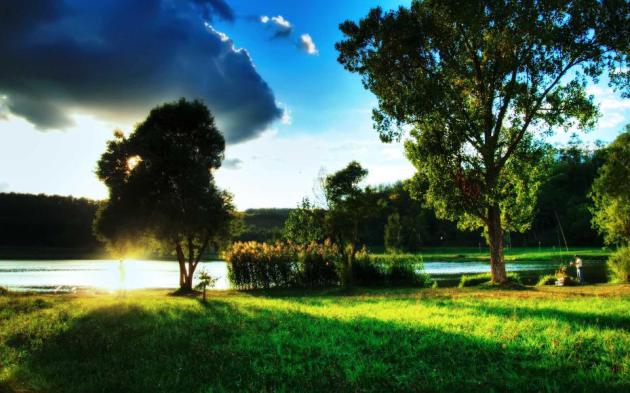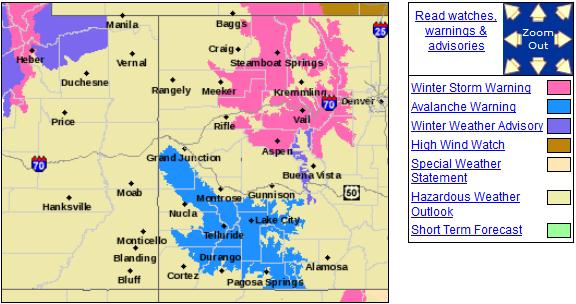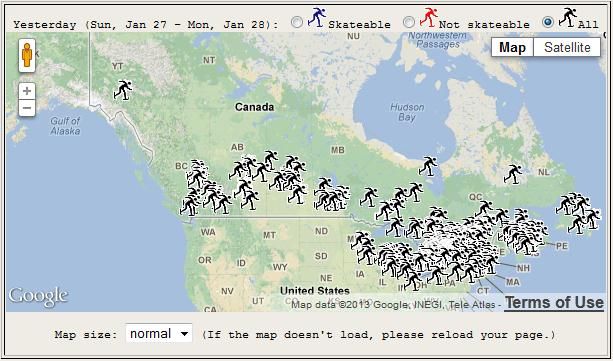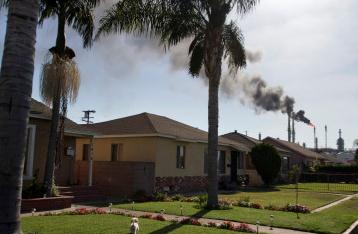Weather Relativity
It doesn't take much to please a Minnesotan, at
least when it comes to weather. "The forecast calls for freezing!" Just
about anywhere else on the planet, except for Fairbanks or Novosibirsk,
such a prediction would trigger a wave of cold weather angst.
"Dig out the parkas, set out space heaters, weatherize the cat!"
But here? After a spell of subzero-burn, 32 F.
feels like a relief, a bad Club Med Vacation. 30s - above zero? I've
seen neighbors in t-shirts, grilling in shorts.
Only in Minnesota.
Now comes a second wave of bitter; not quite as numbing as last week, but cold enough to get you trolling Expedia or kayak.com.
Last week: 5 consecutive nights below zero, one
daytime subzero "high". This week: 2 nights below zero; Thursday highs
hover just above zero, but the wind makes it feel like -20 F. Crisp.
A thaw is possible on Sunday, likely late next week. Right now I don't see any subzero lows in February. Hey, that's progress.
America's weather is more baffling than usual:
60F & severe storms as far north as Chicago, record-setting 70s for
the central Plains, soaking rains pushing into the east coast.
On the weather blog below: a correlation between weather and migraines?
* photo above courtesy of
Hot Tub Cover Pros. Great picture (and no Photoshop involved, I'm told).
 Doesn't Look Like Late January
Doesn't Look Like Late January.
A risk of severe thunderstorms as far north as Pittsburgh, Baltimore
and Philadelphia? I don't remember that happening recently. The same
powerful storm responsible for tornadoes over the Middle Mississippi
Valley yesterday will spark more severe storms, high winds and large
hail later today - although the risk of tornadoes should diminish. Map:
SPC and Ham Weather.
Cold, But Not Nearly As Numbing As Last Week. A
little perspective is in order: last week we enjoyed 6 nights in a row
below zero (one subzero daytime high). This week: 2 nights below zero.
We're already seeing evidence of a rising sun angle. By the weekend
highs should be in the 20s to near 30. Graphic: Iowa State.
Snowfall By Friday Night. The NAM model shows a
stripe of 3-6" from central and eastern Iowa into southern and eastern
Wisconsin, maybe 5" for Madison and Green Bay. So close. Lake effect may
dump another cool foot on the U.P. of Michigan (best snow can be found
here), but precious little new snow is predicted for most of Minnesota,
looking out 1-2 weeks. Nothing new there.
More Big Swings. Temperatures bottom out Thursday
and Friday (highs in single digits) before recovering over the weekend.
The latest ECMWF model run delays a thaw until late next week, but I
expect 20s by the weekend, maybe a shot at 30 on Sunday.
Breaking News: A Kinder, Gentler February. The
latest GFS runs show a cold snap around Feb. 14, but no subzero lows are
predicted for the first 2 weeks of next month. Yes, maybe we're due for
a little break. No significant moisture either.
Extended Outlook: February 6-12. NOAA's experimental
NAEFS temperature trends show warmer than average conditions over much
of the USA for the second week of February as bitter air finally
retreats into northern Canada. The worst of the chill should be history
by Saturday. Spread the news.
The Silver Lining In Drought: 5 Upsides To Rain-Free Weather.
O.K. I'm a glass-half-full guy, but I'm not sure this one passes the
smell test. Try explaining this to a farmer in Worthington or someone
with lakeshore (in theory) on White Bear Lake, or towns in southwestern
Minnesota where aquifers continue to recede, threatening agriculture and
drinking water. But in the spirit of full disclosure here's an excerpt
from a story at
NPR: "
Drought
is mostly seen as a bad thing — and for good reason. It dries up
crops, destroys landscaping and stops ships from moving. But even the
lack of rain clouds has a bright side...Another upside of the drought?
Fewer pests. And not just those plaguing grapes, but fewer bugs that,
well, bug humans. Mike McClain at Metropolitan Mosquito Control
District in the Twin Cities says the types of mosquitoes that drive
people crazy tend to multiply after it rains. "And when you have real
dry conditions that we did the last half of 2012, the actual number of
complaints about mosquitoes and the number biting people tends to go
way down," he says. "And that's a good thing. People are a little less
irritated by mosquitoes during drought..."
* photo above courtesy of Timothy Butz in Ellicott City, Maryland, where Tuesday's high was a balmy 64 F.
63 F. record high in Chicago yesterday.
Are Tornado Alleys A Myth? It's all how you look at the data, right? Here's an excerpt of a fascinating perspective from
Discovery.com: "...
As
she wrote in her AMS meeting poster, Tornado Alley and Dixie Alley are
concepts coined by members of the meteorological community,
specifically, Tornado Alley by Fawbush & Miller in 1952, and then
Dixie Alley by Dr. Allen Pearson in 1971. “But no universal definition
of either concept exists; they shift, expand, and shrink with different
publications, authors, and purposes. They are sociopolitical rather
than scientific concepts,” Henderson explained (you can see her poster here).
The thing about the original Tornado Alley, she said, is that once it
was established, it became the scientific standard against which other
alleys were defined. The concept of a tornado-prone “alley” is a
natural outgrowth of 20th century meteorological history. Tornado alleys
are terms that have become “scientized,” she told me. “Scientization
transforms sociopolitical concepts, ideas, and other phenomena into
metrics that can be standardized and measured...” (photo: meteorologist Aaron Shaffer at WeatherNation TV).
Study Links Headaches And Migraines To Weather. Lightning as a possible trigger for serious headaches? Here's a clip from
wkms.org: "
If
you've ever blamed the weather for a splitting headache, you might be
right. A new University of Cincinnati study finds that lightning may
affect the onset of headache and migraines. "What we found was that on
days with lightning around the patients' homes there was approximately
a 30-percent increase in headache activity, or headache occurrence,
and also a 30-percent increase in migraine," said fourth-year medical
student Geoff Martin, one of the researchers. The study looked at
chronic headache sufferers. There are a number of ways lightning might
be a trigger..." (Lightning photo: AP)
Twice As Many Structures In FEMA's Redrawn Flood Zone.
Many homeowners living near the ocean will be forced to raise their
homes by several feet, or risk not being able to qualify for any
insurance.
The New York Times
has the story; here's an excerpt: "New federal flood maps released on
Monday revealed the grim news that many New Yorkers were girding for
after
Hurricane Sandy
sloshed away: More areas farther inland are expected to flood. Tidal
surges will be more ferocious. And 35,000 more homes and businesses will
be located in flood zones, which will almost certainly nudge up
insurance rates and determine how some structures are rebuilt. (Photo
above: Gizmodo).
"Superfog" Not To Be Taken Lightly, Expert Says. Here's an excerpt of an interesting article at
gainesville.com that caught my eye: "
The
monster that formed over Paynes Prairie on Jan. 29, 2012, and led to
what is believed to be the deadliest set of accidents in Florida
history wasn’t merely fog or smoke or a combination of the two. It was a
unique phenomenon that can arise when the conditions are ripe, and it
could kill again. Meteorologist Gary Achtemeier with the U.S. Forest
Service knows it well. He had named it “superfog” and warns it is not
to be taken lightly. “There is only one course of action for a motorist
encountering superfog, and it is not to drive. I liken it to a bridge
collapse,” Achtemeier said. “It has to be stressed that it is a unique
phenomenon and is extremely dangerous...”
Photo credit above: "
Aerial view of Interstate 75 in
Gainesville, Fla. where according to Florida Highway Patrol at least 9
people have died as a result of multiple crashes Sunday January 29,
2012 involving 4 commercial vehicles and at least 10 passenger
vehicles. The majority of the accidents happened in an area adjacent to
where a brush fire was burning and producing heavy smoke." Rob C. Witzel/Staff photographer
Research: Discovery Of Upper Atmosphere Bacteria That Affect Weather. Here's an excerpt from
examiner.com: "...
The
finding is of interest to atmospheric scientists, because the
microorganisms could play a role in forming ice that may impact weather
and climate. Long-distance transport of the bacteria could also be of
interest for disease transmission models. The microorganisms were found
to be the appropriate size to facilitate the formation of water
droplets and ice in the regions where they were discovered. When the
air masses studied originated over the ocean, the sampling found mostly
marine bacteria. Air masses that originated over land had mostly
terrestrial bacteria. The researchers also saw strong evidence that the
hurricanes had a significant impact on the distribution and dynamics
of microorganism populations..."
Popularity Of New Weather-Reporting App Stuns Officials. Have you downloaded "
mPing" yet? Talk about crowd-sourcing weather; this app takes weather observations to the next level.
Interactive Intelligence has the story; here's an excerpt: "...
Already,
the National Severe Storms Laboratory has received 22,000 reports in
the first month the Precipitation Identification Near the Ground -- or
PING -- app has been in use. That's five times the number of
observations gathered by telephone over the past six years, Elmore said.
And NOAA hasn't even begun promoting PING's existence. "It's
unprecedented," Elmore said. "We have more than we ever thought we
would" in such a short time. It's all due to social media, he said.
Folks are hearing about the apps on sites such as Facebook and signing
up for it..."
Climate Stories...
Fight Fire With Fire. Here's an overview of a
Kickstarter project
unlike anything you've ever seen: "Global warming might be real. The
problem is that this unfortunate phenomenon hurts the pocket books of
some really great Americans, like Charles and David Koch. We are two
filmmakers who want to tell the other side of the story. If we can get
enough funds together, we'll be able to make a documentary that
discredits the current theory of Global Warming so that Charles and
David can quit worrying about the earth and get back to their favorite
pastime, making money...."
Groundwater Depletion Linked To Climate Change. We
assume that when we drill a well, we'll eventually find (drinkable)
ground water. But aquifer depletion is a real concern, especially over
southwestern Minnesota. Here's a clip from a must-read article at
ScienceDaily:..."
Over-pumping
of groundwater for irrigation is mining dry the world's ancient
Pleistocene-age, ice-sheet-fed aquifers and, ironically, at the same
time increasing sea-level rise, which we haven't factored into current
estimations of the rise," says Allen. "Groundwater pumping reduces the
amount of stored water deep underground and redirects it to the more
active hydrologic system at the land-surface. There, it evaporates into
the atmosphere, and ultimately falls as precipitation into the ocean."
Current research estimates oceans will rise by about a metre globally
by the end of the century due to climate change. But that estimation
doesn't factor in another half-a-centimetre-a-year rise, says this
study, expected due to groundwater recycling back into the ocean
globally..."
Photo credit above: "
SFU earth scientist Diana Allen has co-authored a major study linking groundwater depletion to climate change." (Credit: Image courtesy of Simon Fraser University).
Whispers From The Ghosting Trees. This is a very
long (and rather haunting) explanation of why so many trees are sick and
dying worldwide. An excerpt of this worthy read courtesy of
ScienceBlogs: "...
Is
it merely a colossal coincidence that all over the world, within the
past few decades and at a hugely accelerating rate, trees are dying? If
it’s not a coincidence, what is the underlying factor? Fair warning –
this post will be a long explanation as to how there is an underlying
factor, and why it is pollution. One of the strongest and most
persuasive evidence for me has been the visible damage to foliage and
needles that became virtually universal several years ago. Serious,
terminal damage can occur in roots before any of the classic symptoms
appear on leaves…so the fact that by the end of the summer growing
season, it is just about impossible to find a single leaf on a tree,
bush, garden produce or ornamental flowering plant that ISN’T visibly
injured indicates the extent to which the problem has intensified. Just
about any link to my blog will include photos of typical leaf damage...."
Colorado: Are January Red Flag Fire Warnings In The Mountains Part Of A New Climate Reality? Here's an excerpt from
The Summit County Citizens Voice: "
January
fire warnings, nearly unprecedented 30 years ago, have become more
common the last decade. Illustrating the persistence of extraordinary
drought conditions in parts of Colorado, the National Weather Service
issued a Red Flag fire warning
for the Rocky Mountain foothills west of Denver north to the Wyoming
border and encompassing areas that were scorched by last summer’s High
Park Fire. Boulder-based National Weather Service forecaster Mike Baker
said the agency decided to post the warning after three wildfires were
reported Wednesday (Jan. 24) within the span of an hour. All three
fires were above 8.500 feet elevation on the east slope of the
mountains along the Front Range, Baker said..."
Skating Rinks Monitor Climate Change. A grass-roots,
citizen's crowd-sourced effort to track the impact of a warming climate
across Canada, by monitoring ice skating conditions. Here's more from
discovery.com: "
In
the latest citizen science venture, backyard ice skaters are
monitoring climate change in Canada and the northern United States.
After Canadian scientists predicted that global warming will eventually be the demise of backyard skating rinks, a group of geographers at Wilfrid Laurier University in Waterloo created RinkWatch. In just 20 days, 630 volunteers signed up to keep tabs on the condition of their home rinks..."
Obama Talks Climate Change. California Is Acting On It. Here's a clip from a story at
Time Magazine: "
It’s not the happiest time to be an environmentalist. Climate change hit home last year with brutal force: 2012’s historic drought
singed much of the Midwest, turning farms to dust and withering the
corn crop. Other parts of the U.S. suffered through storms like Sandy
and massive wildfires. Average annual temperatures in the continental
U.S. beat the previous recorded high by a full 1°F (1.8°C). And the
future is uglier still: over the weekend, the British economist Nicholas
Stern warned that climate change
could be even worse than he predicted in his sobering 2006 report on
the financial impact of warming, while on Jan. 28 the National Oceanic
and Atmospheric Administration (NOAA) released a draft report outlining the serious threat that sea-level rise poses to the coastal U.S..."
Photo credit above: Jonathan Alcom - Bloomberg. "A
row of homes on a residential street stands as the ConocoPhillips
refinery performed a non-emergency burn-off in the Wilmington district
of Los Angeles on Sept. 15, 2012."
Fox Promotes Debunked Claim That Scientists Exaggerated Climate Change. Here's an excerpt from a story at
Media Matters: "
Fox
News seized on a leaked draft of a U.N. climate report to suggest that
climate change has been "overstated for the last 20 years." But the
draft itself clarifies that observed temperatures over the last 20
years have fallen within the range of past projections despite natural
short-term variation. Fox & Friends First claimed "scientists say"
that "global warming been overstated for the last 20 years," based on a
draft of the fifth assessment report from the U.N. Intergovernmental
Panel on Climate Change (IPCC). The report, which was leaked in December 2012 to a blog called "stopgreensuicide," contains a graph that conservative blogs claimed showed observed temperatures were lower than the projections of IPCC's first assessment report in 1990..."
New U.S. Secretary Of State Argues Climate Change A Top Priority.
Scientific American has the story; here's an excerpt: ..."
Climate
change is not something to be feared in response to. It's to be feared
if we don't," Kerry said, citing National Oceanic and Atmospheric
Administration data showing more than 3,500 U.S. communities shattered
heat records last year and noting the billions spent mopping up
disasters from wildfires in the West to Superstorm Sandy in the East.
Meanwhile, he said, America has barely begun to tap the $6 trillion
global clean energy market. "I will be a passionate advocate about this,
but not based on ideology. Based on facts, based on science. And I
hope to sit with all of you to convince you that this $6 trillion
market is worth billions of American jobs and we better go after it,"
he said...."






